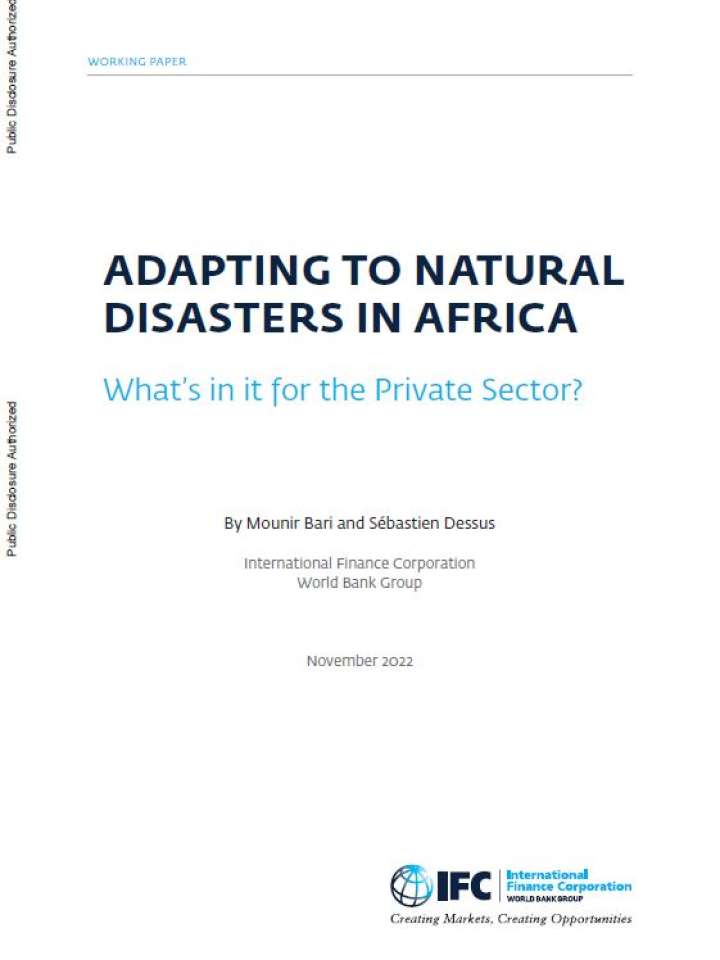Adapting to natural disasters in Africa: What’s in it for the private sector?
This paper tries to fill some of the knowledge gaps related to the bankability and cost-effectiveness of adaptation solutions, first by assessing the economic costs of floods and droughts – the two most economically and socially damaging disasters in Africa; and second by measuring the upfront private investments needed in each African country to offset the losses induced by these disasters, assuming that such investments would generate a sufficient economic return. The private sector has an indispensable role to play in advancing climate adaptation and resilience building. The need for private sector solutions to address climate change impacts is even more pronounced in Africa given its sizable needs for adaptation and the limited fiscal space of most African states to adapt and build resilience to climate and disaster risks.
Using the traditional dynamic Solow model, the authors estimate the potential for private investment in adaptation to natural disasters in Africa by estimating the short- and long-term impact of floods and droughts on per capita GDP growth. As opposed to the more commonly used approaches of estimating the impact of natural disasters on productive assets, our methodology is very practical as it focuses on economic flows rather than stocks, is not data demanding, and does not require complex economic or environmental modelling, and can thus easily be applied on a large number of African countries to estimate the private investment potential in adapting to floods and droughts. Their empirical results suggest that the private sector could have an interest in investing up to about hundred billion cumulatively over the next twenty years, or five billion per year, to adapt to the current frequency and severity of floods and droughts in Africa. As such, the estimate corresponds to only a small fraction of what is projected by more traditional estimates which include public good requirements, cover a broader set of natural disasters and climate stressors, may project increases in the severity of natural disasters, and retain sometimes higher ambition than just to offset consequences of natural disasters. Nevertheless, the researchers' estimate is significant and well above current levels, especially in African countries most prone to floods and droughts.
Explore further
